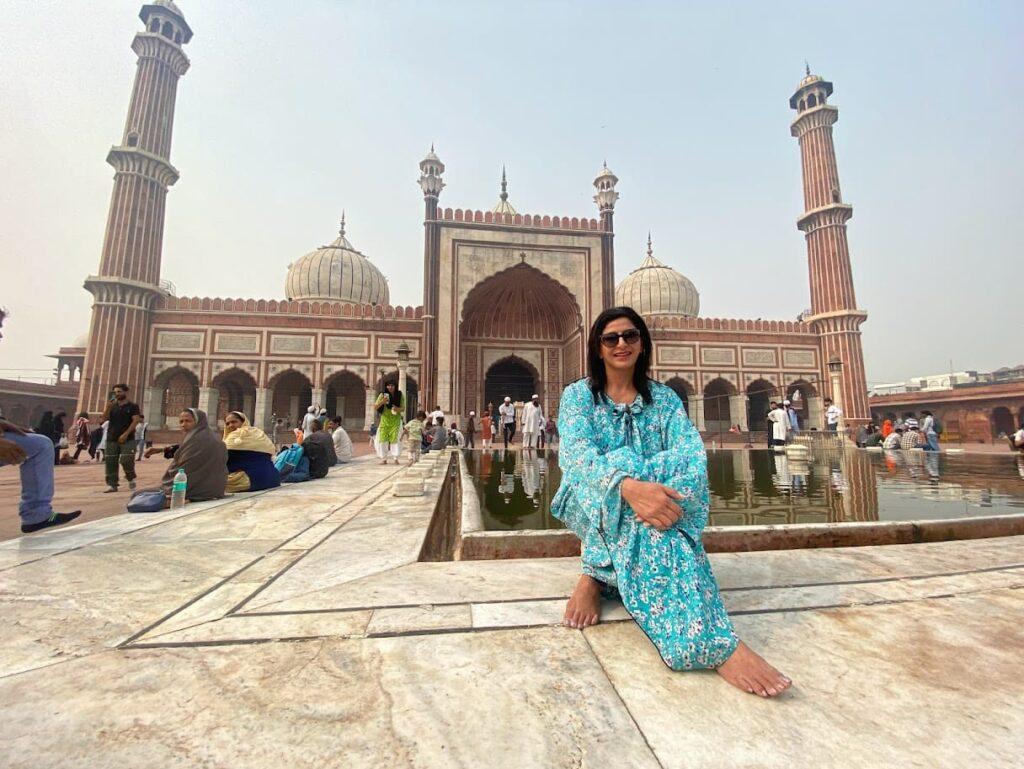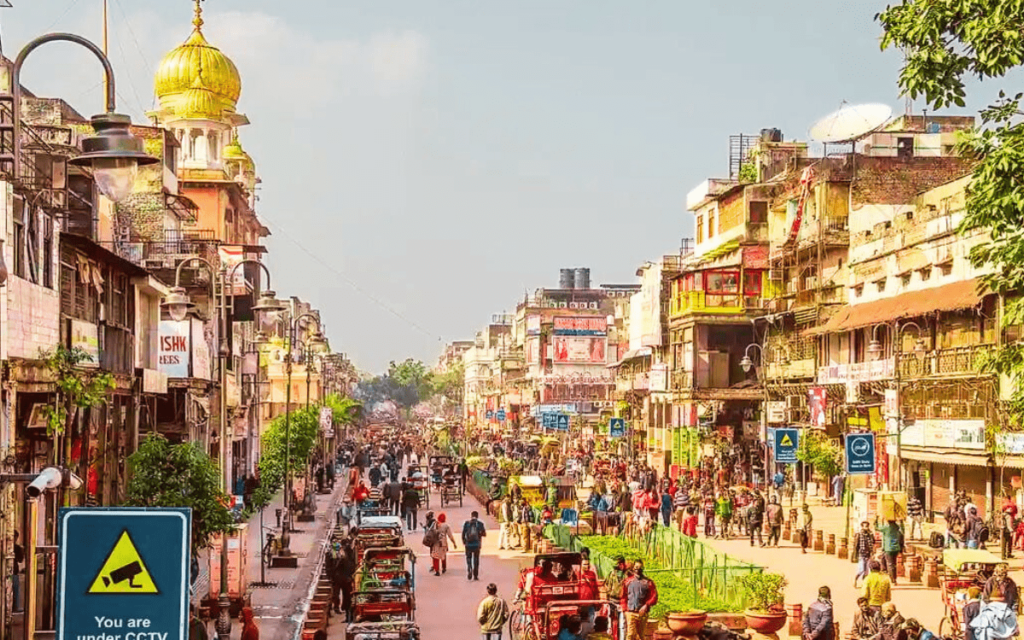The “Legacy of Love and Architectural Splendor” is a captivating narrative that intertwines the historical richness of the Mughal Empire with the enduring love story of Shah Jahan and Mumtaz Mahal. At the heart of this legacy stands the iconic Taj Mahal, a marvel of architectural brilliance and a symbol of eternal love. Commissioned by Shah Jahan in memory of his beloved wife Mumtaz Mahal, the Taj Mahal is a timeless testament to their enduring affection. The legacy of love and architectural splendor that Shah Jahan left behind continues to enchant and inspire visitors from around the world, offering a glimpse into the grandeur and romance of the Mughal era.

Shah Jahan Mughal Emperor and Architectural Icon
Shah Jahan, the fifth Mughal emperor of India, was born on January 5, 1592, in Lahore, present-day Pakistan. His birth name was Prince Khurram, and he was the third son of Emperor Jahangir and his wife, Jagat Gosain. Growing up in the opulent Mughal court, Prince Khurram displayed remarkable intelligence, charisma, and a deep appreciation for art and architecture from a young age.
At the age of 19, Prince Khurram caught the eye of Arjumand Banu Begum, known as Mumtaz Mahal, during a military campaign in Deccan. Their love blossomed, and they were married in 1612. Mumtaz Mahal became Shah Jahan’s most beloved wife, accompanying him on military campaigns and serving as his trusted confidante and advisor.
Shah Jahan’s reign as emperor was marked by significant military conquests, including successful campaigns against the Deccan Sultanates and the subjugation of the Rajput kingdoms. His military prowess and strategic vision solidified the Mughal Empire’s dominance in India.
Shah Jahan His Legacy of Love Taj Mahal

Shah Jahan’s legacy is intricately intertwined with the timeless tale of the Taj Mahal, a monument that stands as a testament to his undying love for Mumtaz Mahal. This iconic mausoleum, finalized in 1653, was born out of the emperor’s profound grief following Mumtaz Mahal’s untimely death during childbirth in 1631. Determined to honor her memory in the most magnificent way possible, Shah Jahan embarked on the ambitious project of creating a masterpiece of unparalleled beauty.
Guided by a Taj Mahal tour guide, visitors are immersed in the story behind this architectural marvel. The Taj Mahal’s intricate marble architecture, embellished with exquisite carvings, intricate inlays of precious stones, and breathtaking gardens, reflects not only the emperor’s deep devotion but also represents the pinnacle of Mughal craftsmanship and artistry.
Beyond the Taj Mahal, Shah Jahan’s architectural vision extended to the creation of Shahjahanabad, the fortified city that would later evolve into Old Delhi. Collaborating with renowned architect Ustad Ahmad Lahauri, Shah Jahan crafted a masterpiece of urban planning. Shahjahanabad’s wide boulevards, grand gateways, and imposing walls were a testament to the empire’s grandeur and power, showcasing the emperor’s dedication to creating spaces of enduring beauty and significance.
Shah Jahan Majestic Glories of the Red Fort
The Red Fort, also known as Lal Qila, is a symbol of Mughal grandeur and architectural excellence. Completed in 1648, it stands as a testament to the glory days of the Mughal Empire. This sprawling fortress in Shahjahanabad, now Old Delhi, was not only a majestic imperial residence but also a center of administration and governance.
As you step into the Red Fort guided by a knowledgeable tour guide, the rich history and stories of its palaces unfold. The Diwan-i-Am (Hall of Public Audience) and Diwan-i-Khas (Hall of Private Audience) reflect the opulence and sophistication of Mughal courtly life. The intricately carved marble structures, including the iconic Peacock Throne, showcase the empire’s wealth and artistic mastery.
During the 1857 revolt, the Red Fort witnessed significant historical events. It became a symbol of resistance against British colonial rule, with the last Mughal emperor, Bahadur Shah II, using it as his headquarters during the uprising. The fort’s role in the revolt adds layers of historical significance, highlighting its importance in India’s struggle for independence.
The Red Fort tour guide provides invaluable insights into the fort’s architecture, history, and significance. Visitors are guided through its majestic gateways, stunning pavilions, and lush gardens, experiencing the grandeur and legacy of the Mughal era. The fort’s red sandstone walls, intricate marble palaces, and meticulously designed water channels create a mesmerizing atmosphere, transporting visitors back in time to the zenith of Mughal power and splendor.
Shah Jahan’s Architectural Legacy Jama Masjid

Adjacent to the Red Fort stands the majestic Jama Masjid, one of the largest and most splendid mosques in India. Commissioned by Shah Jahan and completed in 1656, the Jama Masjid is a masterpiece of Islamic architecture, with towering minarets, domed pavilions, and a vast courtyard capable of accommodating thousands of worshippers. Exploring this architectural marvel is made even more enriching with the guidance of a knowledgeable Jama Masjid Tour Guide, who illuminates the history, symbolism, and intricate details of this sacred site.
Furthermore, the architectural additions surrounding Chandni Chowk, such as the historic Gurdwara Sis Ganj, showcase the diverse cultural heritage of Delhi. The Gurdwara, built in the memory of Guru Tegh Bahadur, features intricate marble work, a serene sarovar (holy tank), and a vibrant atmosphere of spiritual devotion. Alongside these religious landmarks, Chandni Chowk boasts colonial-era buildings, Mughal-era havelis (mansions), and traditional markets that offer a glimpse into Delhi’s architectural evolution over centuries. Each structure tells a story, blending influences from various eras and civilizations, creating a tapestry of architectural splendor that continues to captivate visitors
Shah Jahan’s Chandni Chowk A Timeless Hub of Culture and Commerce

Surrounding the Jama Masjid is the bustling Chandni Chowk, a vibrant marketplace that has been a hub of commerce and culture since the Mughal era. Lined with narrow lanes, bustling bazaars, and historic buildings, Chandni Chowk is a testament to Delhi’s rich heritage and entrepreneurial spirit. Here, visitors can immerse themselves in the city’s history with an Old Delhi Heritage walk, exploring hidden gems like Gurdwara Sis Ganj, a historic Sikh temple with a profound connection to the martyrdom of Guru Tegh Bahadur. Additionally, the legacy of Begum Jahanara, Shah Jahan’s daughter known for her architectural patronage and cultural contributions, adds another layer of historical significance to this vibrant neighborhood. Chandni Chowk’s fusion of heritage, spirituality, and commerce makes it a must-visit destination for those seeking to delve into Delhi’s captivating past.
Shah Jahan’s reign as emperor was a golden age of art, culture, and prosperity in the Mughal Empire. His patronage of architecture, art, and literature elevated the empire to new heights of splendor and sophistication. Despite facing challenges in his later years, including a power struggle with his sons and a period of imprisonment, Shah Jahan’s enduring legacy as a visionary ruler and a patron of the arts continues to inspire awe and admiration to this day.







